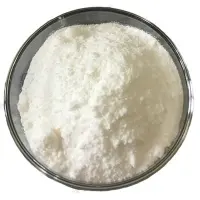-
Categories
-
Pharmaceutical Intermediates
-
Active Pharmaceutical Ingredients
-
Food Additives
- Industrial Coatings
- Agrochemicals
- Dyes and Pigments
- Surfactant
- Flavors and Fragrances
- Chemical Reagents
- Catalyst and Auxiliary
- Natural Products
- Inorganic Chemistry
-
Organic Chemistry
-
Biochemical Engineering
- Analytical Chemistry
-
Cosmetic Ingredient
- Water Treatment Chemical
-
Pharmaceutical Intermediates
Promotion
ECHEMI Mall
Wholesale
Weekly Price
Exhibition
News
-
Trade Service
*For medical professionals only
Parkinson's disease is the second most common neurodegenerative disease in the world[1].
Lifestyles such as diet and physical activity have been shown to be associated with the onset of Parkinson's disease in previous studies [2,3
].
However, after Parkinson's disease develops, what role do different types of lifestyles play in patients' clinical outcomes? Credible results are lacking
.
Recently, Gao Xiang's team from the School of Public Health of Fudan University published an important research result in the journal JAMA Network Open[4].
Their analysis of Parkinson's disease patients in two large cohorts in the United States found that prior to the diagnosis of Parkinson's disease, healthy eating patterns were significantly associated with a 31% reduction in all-cause mortality, and higher physical activity intensity was associated with a 29% reduction in all-cause mortality.
After the diagnosis of Parkinson's disease, healthy eating patterns and high physical activity intensity were associated
with a 43% and 53% reduction in all-cause mortality, respectively.
After the combined analysis of diet patterns and physical activity intensity, the researchers found that Parkinson's disease patients with pre-diagnosis eating pattern scores and physical activity metabolic equivalent in the top 1/3 were significantly associated with a 49% reduction in the risk of death, and after diagnosis, there was a significant association
with a 65% reduction in the risk of death in Parkinson's disease.
The study assessed the value of healthy eating patterns and active lifestyles before and after Parkinson's disease onset using a well-researched large prospective follow-up cohort of well-gathered information, and the association between the two and the reduced risk of death is expected to provide clinicians with new ideas for improving outcomes and allowing more patients to benefit
from relatively simple interventions.
Article title graphic
According to the results of the two-year questionnaire survey and the confirmation results of the professionals' medical records and other data, Professor Gao Xiang's team selected 1251 Parkinson's disease patients in the two large cohorts of nurse health research and health professional follow-up study, and the patients who already had Parkinson's disease and lack of dietary patterns in the baseline questionnaire were excluded
.
Dietary patterns were assessed on the 4-year Alternative Healthy Diet Index[5] and the Alternative Mediterranean Diet Score [6] questionnaire, while the intensity of physical activity was assessed using a 2-4 year questionnaire and quantified as weekly metabolic equivalent consumption levels [7].
Alternative Healthy Eating Index Questionnaire[5]
Considering that Parkinson's disease-related tremor and increased muscle tone symptoms may have an impact on diet and exercise patterns, the researchers divided the questionnaire results into two stages: baseline to pre-diagnosis and post-diagnosis until death or the end of the study, based on the time of diagnosis of Parkinson's disease, and calculated the average of the diet index and physical activity intensity data in the two stages for subsequent analysis
.
The study's primary outcome was defined as all-cause mortality, and Parkinson's disease-related mortality was also analysed
according to international disease classification standards.
Of the 1251 patients with Parkinson's disease included in the analysis, 52.
1%
were men.
During the 32-34 years of follow-up, a total of 942 patients died
.
Before the diagnosis of Parkinson's disease, the first 1/4 of patients were significantly associated with a 31% reduction in all-cause mortality (risk ratio: 0.
69, 95% CI: 0.
56 to 0.
85), and the first 1/4 of metabolic equivalent consumption levels were associated with a 29% reduction in all-cause mortality compared to the last 1/4 (risk ratio: 0.
71, 95% CI: 0.
57 to 0.
87).
Association of alternative healthy eating index grading and outcomes
After the diagnosis of Parkinson's disease, healthy eating patterns and high physical activity intensity were associated
with a 43% reduction in all-cause mortality (risk ratio 0.
57, 95% CI: 0.
42 to 0.
78) and 53% (risk ratio: 0.
47, 95% CI: 0.
35 to 0.
63), respectively.
Association of physical activity intensity and outcome
The combined analysis of the effects of dietary patterns and physical activity intensity found that in Parkinson's disease patients with pre-diagnostic eating pattern scores and physical activity metabolic equivalent in the top 1/3, the risk of death was reduced by 49% (risk ratio: 0.
51, 95% CI: 0.
36-0.
73) after diagnosis, and the risk of death from Parkinson's disease was reduced by 65% after diagnosis (risk ratio: 0.
35, 95% CI: 0.
23-0.
52).
。
Combined effect of dietary patterns and physical activity intensity
Patients with higher adherence to alternative Mediterranean dietary patterns were associated
with a lower risk of death at the post-diagnostic stage.
When Parkinson's disease-related deaths were used as an outcome, the association between lifestyle and all-cause mortality risk did not change
significantly.
Overall, with the help of large samples and long-range follow-up cohorts, this study provides reliable evidence
for the association analysis of lifestyle and clinical outcomes in patients with Parkinson's disease.
The value of a healthy diet and higher intensity of physical activity in reducing mortality is associated with a stronger risk of death in patients before and after Parkinson's disease
.
At a time when the pathogenesis and perfect treatment of Parkinson's disease still need further study, the results of this study have important reference value
.
Doctors can encourage people with Parkinson's disease to actively pursue healthy eating and exercise patterns that may improve their life expectancy
.
Lifestyle-assisted therapies for Parkinson's disease, which have been lacking in evidence, are now worth further scrutiny
.
However, this study also has certain flaws
.
For example, motor function symptoms in Parkinson's disease patients may have an impact on diet and exercise patterns, and in some cases, unhealthy diets and exercise patterns may be the result of progression of Parkinson's disease, and multiple additional analyses conducted by researchers have made it difficult to completely eradicate this effect
.
Second, Parkinson's disease-related deaths have not been confirmed by neurologists and may be misguided
.
The limited number of Parkinson's disease-related deaths also limited the investigators from conducting further analysis; The study population was mostly health care workers with high socioeconomic status, and the race was predominantly white, and caution
was needed when extrapolating conclusions.
It is expected that future research can further reveal the role of lifestyle improvement in the treatment of Parkinson's disease, find the molecules, pathways and mechanisms behind it, and then provide more entry points and ideas for the treatment of Parkinson's disease, and illuminate the way
forward in life for patients suffering from Parkinson's disease and the reduction of quality of life.
References
[1] Ascherio A, Schwarzschild MA.
The epidemiology of Parkinson's disease: risk factors and prevention.
Lancet Neurol.
2016; 15(12):1257-1272.
doi:10.
1016/S1474-4422(16)30230-7
[2] Liu YH, Jensen GL, Na M, et al.
Diet Quality and Risk of Parkinson's Disease: A Prospective Study and Meta-Analysis.
J Parkinsons Dis.
2021; 11(1):337-347.
doi:10.
3233/JPD-202290
[3] LaHue SC, Comella CL, Tanner CM.
The best medicine? The influence of physical activity and inactivity on Parkinson's disease.
Mov Disord.
2016; 31(10):1444-1454.
doi:10.
1002/mds.
26728
[4] Zhang X, Molsberry SA, Schwarzschild MA, Ascherio A, Gao X.
Association of Diet and Physical Activity With All-Cause Mortality Among Adults With Parkinson Disease.
JAMA Netw Open.
2022; 5(8):e2227738.
Published 2022 Aug 1.
doi:10.
1001/jamanetworkopen.
2022.
27738
[5] Chiuve SE, Fung TT, Rimm EB, et al.
Alternative dietary indices both strongly predict risk of chronic disease.
J Nutr.
2012; 142(6):1009-1018.
doi:10.
3945/jn.
111.
157222
[6] Fung TT, McCullough ML, Newby PK, et al.
Diet-quality scores and plasma concentrations of markers of inflammation and endothelial dysfunction.
Am J Clin Nutr.
2005; 82(1):163-173.
doi:10.
1093/ajcn.
82.
1.
163
[7] Ainsworth BE, Haskell WL, Leon AS, et al.
Compendium of physical activities: classification of energy costs of human physical activities.
Med Sci Sports Exerc.
1993; 25(1):71-80.
doi:10.
1249/00005768-199301000-00011
Editor-in-chargeBioTalker







